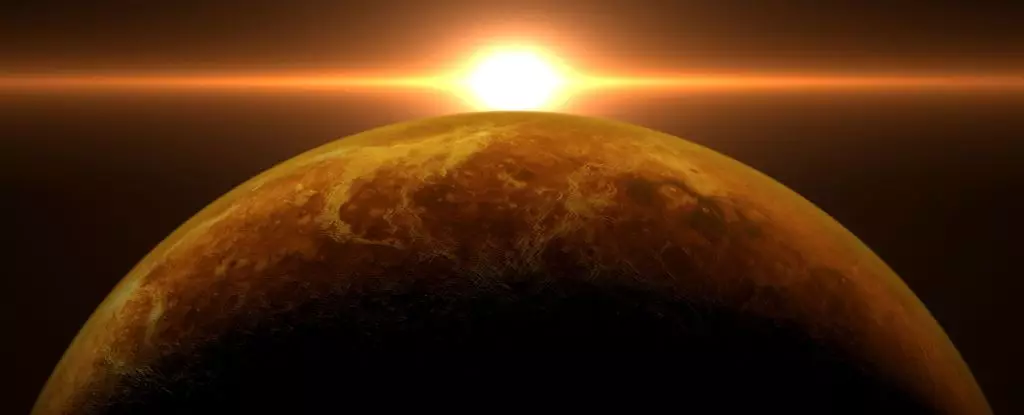Venus, often lauded as Earth’s twin, has long sparked curiosity in both scientists and the public alike. Conventionally heralded as a cautionary parable of planetary evolution gone awry, the narrative surrounding Venus has been that it was once an idyllic planet, perhaps even thriving with liquid water. However, emerging research challenges this romanticized view, painting a picture of a planet that may never have had the potential for habitability that Earth embodies. The exploration of Venus’s environment not only informs us about the planet itself but also provides insights into the broader implications for exoplanets and the nature of life in the universe.
A team led by Tereza Constantinou from the University of Cambridge undertook an exhaustive analysis of Venus’s atmosphere, focusing on the rates of destruction for vital components such as water, carbon dioxide, and carbonyl sulfide. By evaluating these elements, the researchers concluded that Venus’s interior is exceedingly dry and has remained so throughout its history. Contrary to the belief that Venus was once cloaked in oceans, the findings reveal that even during its formative years, the planet likely lacked the conditions necessary to retain liquid water on its surface.
This debunking of Venus’s potential for habitable environments raises questions not only about the conditions needed for life but also about the geological and atmospheric processes that govern a planet’s evolution. A planet that cannot maintain a stable supply of water will struggle to develop life forms similar to those on Earth.
The research illustrates that volcanic activity—which is rampant across Venus—primarily emits gases with only a minuscule percentage, around 6 percent, consisting of steam. To compare, Earth’s volcanic output is largely dominated by water vapor due to its wet interior and ample liquid reservoirs. The stark contrast between the two planets highlights not just how atmospheric conditions differ, but also indicates that Venus may have been doomed to a dry fate from the start, meaning its geological evolution diverged significantly from that of Earth.
The lack of evidence for water-related erosion also supports the notion of a largely featureless surface, remote from the nuanced landscapes shaped by rivers and lakes common on Earth. Without the transformative power of liquid water, it becomes clear that Venus’s geology would not share the same diverse processes that define our planet, leaving it a barren stony wasteland.
The implications of a dry Venus extend far beyond its atmosphere and surface conditions. If Venus was never hospitable, it leads to fundamental insights regarding the habitability of similar exoplanets discovered in recent years. If we conclude that a planet with characteristics akin to Venus lacks the essential conditions for life, this shifts the criteria for what might be considered a candidate for life in our galactic explorations.
As Constantinou highlights, the study of Venus serves as a natural laboratory that can refine our understanding of habitability, not just in our solar system but also for exoplanets. Discovering the properties of neighboring worlds can illuminate pathways toward understanding the diverse possibilities for life elsewhere in the universe—whether in the extreme atmospheres of Venus or the icy surfaces of distant exoplanets.
The conclusions drawn from these investigations necessitate a paradigm shift in astrobiology—a sector long captivated by the search for Earth-like planets with water-rich atmospheres. If Venus’s dry past is indeed characteristic, it shows that mere proximity to a star within the habitable zone does not guarantee an ability to host life.
Furthermore, any potential biosignatures detected in Venusian atmospheres could represent forms of life vastly different from those we know. The possibility that Venus might harbor life adapted to extreme conditions—such as sulfuric acid clouds—opens avenues for astrobiological research that challenges our existing frameworks.
The evolving narrative of Venus reminds us that the search for extraterrestrial life must be nuanced and adaptable. As scientists continue to peel away the layers of our gaseous neighbor, we are met with revelations that both reinforce and dismantle our previous assumptions. Venus may not be a mirror reflecting Earth’s potential for life; instead, it serves as a stark reminder of the variety of planetary environments and their unique evolutionary narratives. As we refine our search for life beyond Earth, let us carry forward the lessons from this enigmatic planet—because truly understanding habitability requires looking beyond familiar boundaries.


Leave a Reply